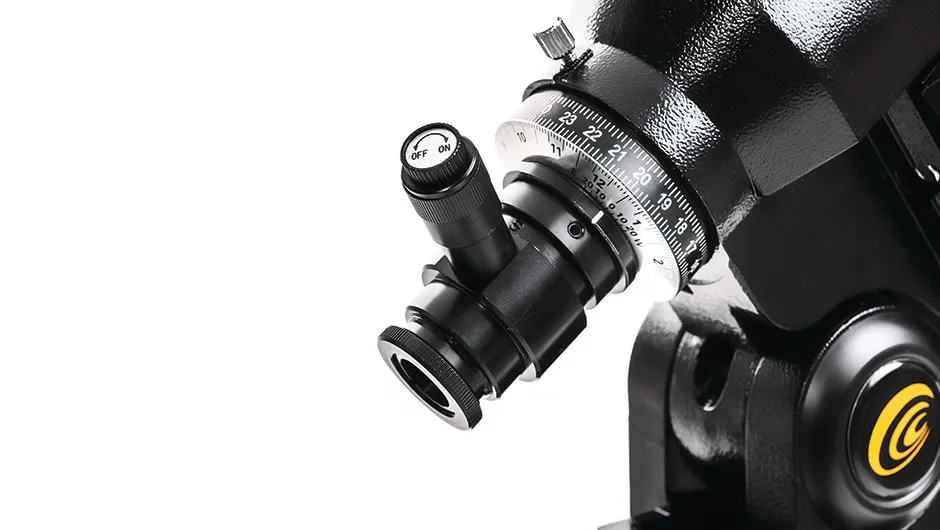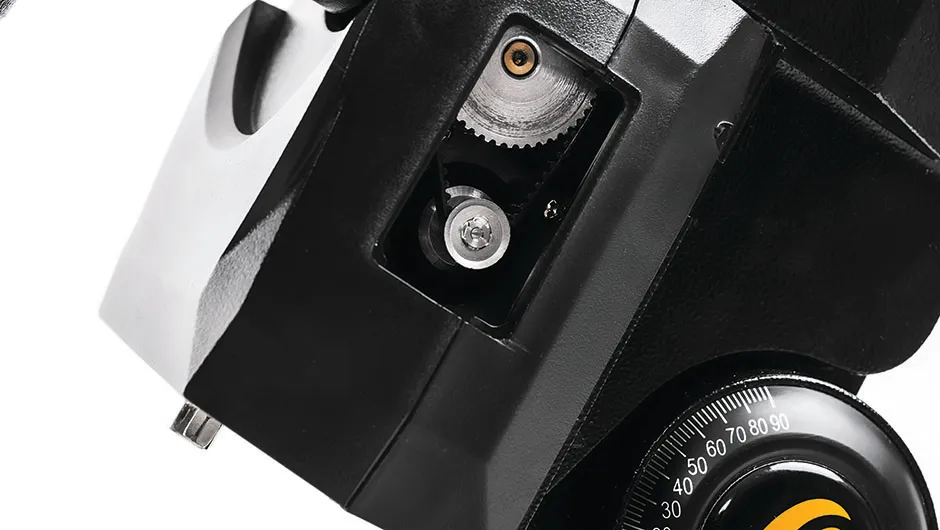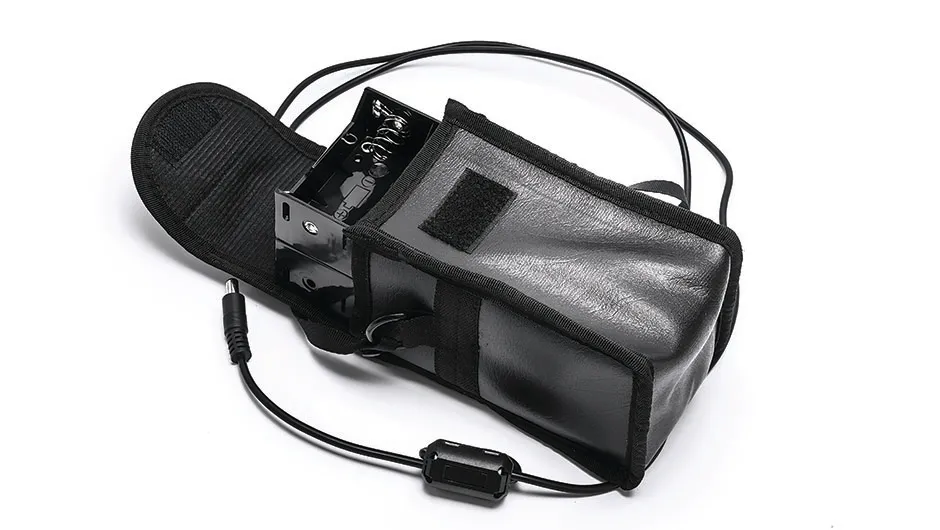With an increasing number of Wi-Fi-controlled devices available in today’s marketplace, Explore Scientific’s Exos2 PMC8 is a bold new offering.
This mount is completely centred around its PMC8 Wi-Fi control system, doing away with the traditional handset controller completely.
Control of the mount is instead achieved by pairing any Wi-Fi enabled Windows device (be it a laptop, tablet or smartphone) with the mount’s own Wi-Fi unit and then using the ExploreStars Open Go-To app.
Support for other platforms is reportedly in development.
The mount has an ST-4 port for autoguiding and is the first to feature a wireless driver for the popular ASCOM platform of open source telescope control software.
The Wi-Fi unit is separate from the mount body, attaching to the tripod legs via a bracket.

The power supply for the Wi-Fi unit also powers the mount’s motors – control cables run from the Wi-Fi unit’s ports to the RA and dec. motors.
The ExploreStars Open Go-To app itself offers a fresh take on telescope control and is especially useful for beginner and intermediate astro imagers, as its graphical interface guides you step by step though the set up and alignment procedure.
There are many pictorial references of the sky to help you along the way.
The general layout of the interface is clear and uncluttered, separating the system’s many functions and menus from the mount’s slewing controls.
Automatic slewing
The menu system gives you access to the large database of objects, which are neatly organised into categories and subcategories.
All named objects in the database are accompanied by a good amount of clear and interesting information, with pictures of each for you to look through.
There is also the option to slew the telescope to the current object selected if it is visible above your horizon.
When manually slewing the mount, you can choose to use the onscreen directional pad or joystick, selecting the slew speed via a number pad or the distance from the centre of the joystick.

The greater the distance, the faster the slewing speed.
The mount is relatively quiet when in operation, with the stepper motors making a soft hum, although it does build up to a slightly musical note when slewing at maximum speed.
Externally it is constructed mostly of metal, with the motor housing a hard plastic.
A tubular steel tripod holds the mount head in place well, and vibrations in the eyepiece when observing died down within 10 seconds of the mount being intentionally bumped.
With the mount levelled and polar aligned, we first tested for any variance in the plane of the puck that holds the telescope and the mount’s axis (cone error). There was a very slight misalignment evident that was easily adjusted.
After going through the alignment procedure, we tested the Go-To function using a 32mm Plössl eyepiece and a 1,000mm focal length f/5 Newtonian telescope.
The mount worked well – in each instance it placed our chosen target within the central 75 per cent of the field of view, even when slewing to objects in opposite areas of the sky.
Once your selected target has been acquired by the mount it will automatically track it through the sky until you give it another command, allowing easy observation and the opportunity for some astrophotography.
The Exos2 PMC8 is portable enough to travel, and its high-quality stepper motors and control system should produce good overall results in the field.
In the process of testing from our London-based location we did occasionally experience loss of the Wi-Fi connection to the mount.
After some quick and friendly correspondence with the manufacturer, Explore Scientific is now looking into the issue, which it has assured us is not a common occurrence.
Other than this anomaly, the mount performed well in all other respects.

Outstanding feature: Wi-Fi control and Go-To app
The Exos2 control system uses a two-channel multi-processor microcontroller with a massive eight CPUs, hence the PMC8 title.
This offers a great enhancement in processing power over the usual single processor used in most telescope control Go-To handsets.
Along with this processing power, it also has great choice over which type of device to connect with autoguiding for astrophotography, a wireless ASCOM connection, and the ability to gather current date, time and location data from your windows device, making the setup easier and more convenient.
The connection to ASCOM allows you to tweak and modify the mount’s control systems in a customised manner, either by using a pre-existing ASCOM add-on or by programming your own modifications.
The ExploreStars Go-To app’s graphical user interface is well designed, intuitive and easy to use, even for beginners with little experience of equatorial mounts and limited knowledge of the night sky.
Belt-driven stepper motors
The mount has belt-driven dual stepper motors for greater smoothness when slewing and increased tracking accuracy.
The combination of a fiberglass-reinforced neoprene belt and Nema 11 bipolar stepper motors reduces any backlash that might be associated with a purely gear-driven system to a minimum.
Polarscope
The mount has a built-in, illuminated-reticle polarscope.
The sky alignment etchings in the polarscope eyepiece are clear and easy to use.
The red LED illumination can be dimmed and ensures that you can always see the alignment etchings against a dark sky, while also helping you to retain dark-adapted vision.
Highlighted manual controls
The manual controls for the Exos2 PMC8 are highlighted in bright silver to contrast with the black metal and plastic that the main body consists of.
In short, anything that is to be screwed in, adjusted, locked or bolted stands out well, making all of the various pieces easy to locate.
Tripod
The tubular steel tripod that has a built-in bubble level to help with accuracy when setting up.
Each leg has two locking bolts to prevent any slippage.
The tripod spreader also acts as an accessory tray that can hold your various pieces of equipment.
Battery pack
Included in the package is a 12V Battery pack that uses eight D batteries to power the Wi-Fi controller and subsequently mount itself.
A battery pack grants you the freedom to set the mount up at any location with ease.
We would recommend using only high-quality batteries for the best performance
Price: £849.00
Weight: 13.5kg (without counterweights)
Supplier: Telescope House
Telephone: 01342 837098
Website:www.telescopehouse.com
This review originally appeared in the February 2018 issue of BBC Sky at Night Magazine